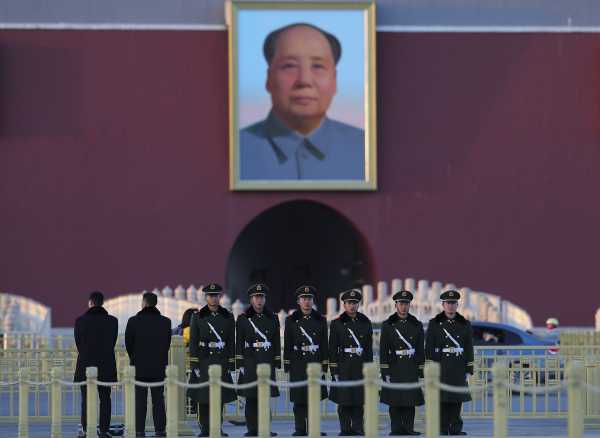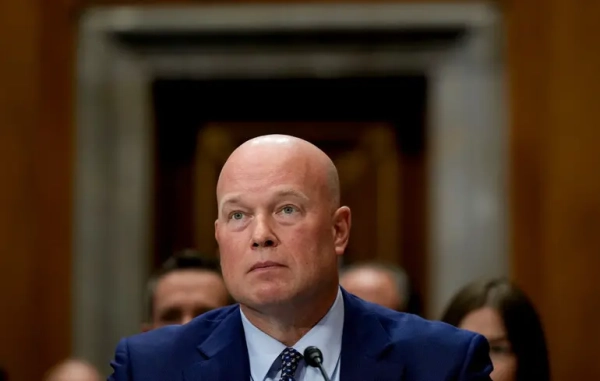
Some days you go to work and not much exciting happens.
Other days you go to work and the White House describes you as “similar” to Russian communist revolutionary Vladimir Lenin and former chair of the Communist Party of China Mao Zedong.
The White House released a report earlier on Tuesday titled “The Opportunity Costs of Socialism,” which spends a lot of time making a case against single-payer health care. It includes this paragraph:
When you head on down to footnote 82, you see that one of the journalists cited there is me — specifically, an article I wrote for Vox in 2014 about Vermont’s failed attempt to set up a single-payer health care system.

Mao and Lenin are mostly taught in schools for their observations on whether government price regulation can create efficiencies in health care. This is why the health systems of Canada, France, the United Kingdom, and Germany — not to mention America’s Medicaid, Medicare, and Veteran’s Administration health programs — all have paintings of Mao hanging in their foyers.
But this part of the White House report is actually a good moment to examine a belief that I’ve long held as a health care reporter — one that I still believe even after reading this report.
Health care systems where the government sets prices are more efficient than those where prices vary dramatically from one health plan to another, and this lowers costs across the board for patients. As Mao, Lenin, and I all agree (as do leaders of every other wealthy planet in the world): That’s a good thing.
Why price regulation creates efficiency
Lots and lots of studies conclude that our administrative costs are significantly higher than those of our peer countries. They find that our administrative costs are higher because the complexity of insurance coverage in the United States creates mountains of paperwork.
Consider, for example, this report from the Journal of the American Medical Association (JAMA), which finds that about 8 percent of medical spending goes toward administrative costs — compared to 1 to 3 percent in our peer countries.
They find that “physicians in the United States also reported having a higher level of administrative burden” than those in the other 11 high-income countries that the report looks at. In their survey, 54 percent of American doctors say issues related to insurance are a major problem.
And it turns out, that figure published in JAMA — the estimate that we spend 8 percent of our health care dollars on administrative costs — is on the low end of the academic research.
A 1999 study in the New England Journal of Medicine, for example, estimates that 30 percent of health care spending goes toward administrative costs. A 2011 paper published in the journal Health Affairs pegs it at 25 percent. (That paper finds higher administrative costs in other countries, too.)
Another clever study, also published in Health Affairs, tackled this question in a slightly different way: They looked at how much it costs for American and Canadian doctors to deal with the health insurers who pay the bills.
They find that the average American doctor spends $82,975. Across the border in Ontario, doctors spend about a quarter of that amount — $22,205 per physician — interacting with the province’s single-payer agency.
So, yes. I think that the United States would have a more efficient health care system if our government regulated health care prices. Single prices for medical procedures would eliminate the massive back offices devoted to getting insurers to pay hospitals and doctors.
And weirdly, the White House report takes a moment to acknowledge this, noting that Medicare (a government-run health care program that sets health care prices) has lower administrative costs than private insurers. It cites a 2008 study that finds, “private plans spend about 12 percent on administrative costs, whereas Medicare costs were 5 percent plus the administrative costs of intermediaries that collect premiums and process Medicare claims.”
Only later do they cite, somewhat confusingly, conflicting data that seems to suggest administrative costs of the two types of plans being roughly similar.
It isn’t efficiency that makes single-payer cheap. It’s low prices.
At the same time, I don’t think that lower administrative costs are the key reason why single-payer systems spend less on health care.
The reason that other countries have lower health care spending is that their governments set prices that are significantly lower than ours. The most powerful tool that our peer countries use to tamp down on health care spending is price regulation. The increased efficiency and reduced administrative costs are a nice byproduct of this.
The health care prices in the United States are, in a word, outlandish. On average, an MRI in the United States costs $1,119. That same scan costs $503 in Switzerland and $215 in Australia. And keep in mind, these are just averages — I’ve had readers send me bills for MRIs here in the United States that are as high as $25,000.
In 2003, a team of influential economists published a paper pointing out that prices are the key problem in American health care. It came with the title: “It’s the Prices, Stupid.”
When you review other countries — not just single-payer countries, but also countries like Switzerland with competing, private insurers — you see that the thing they have in common is that they’re regulating health care prices.
They’ve decided that health care should be like a utility: something everyone needs access to, and therefore a space where the government is going to step in and regulate prices. As a result, their prices are lower.
This is a decision that lots and lots of countries have made. The countries at the top of the Heritage Foundation’s Economic Freedom Index? Places like Singapore, Australia, New Zealand, and Ireland? They all regulate health care prices.
The decision to regulate prices does come with trade-offs. Regulating prices requires governments to make difficult decisions about what benefits will and won’t be offered; to negotiate down pharmaceutical prices, for example, the government has to be able to say no to certain drugs it thinks it can’t get a good deal on.
It’s possible, too, that lower spending could reduce innovation in health care. If the United States is no longer throwing a fifth of its economy into health care, that could reduce incentives for pharmaceutical companies and others to keep pursuing groundbreaking new treatments.
There are debates we absolutely ought to be having about these trade-offs. Do we think lowering health care prices is worth the outcome where, sometimes, certain people won’t have insurance coverage for benefits they believe they need? Are we okay sacrificing some innovation to make health care more affordable for all?
It’s a hard debate! I don’t know the answers — I don’t think there is one right answer for such a complex question. I think that’s why, even among countries with universal coverage, you see huge variation in how different countries structure their health care systems. Different governments come up with different answers.
But I do think there is a strong body of research to suggest that countries that price regulate do end up with more efficient, cheaper health care systems as a result — and not just in Maoist China.
Sourse: vox.com






